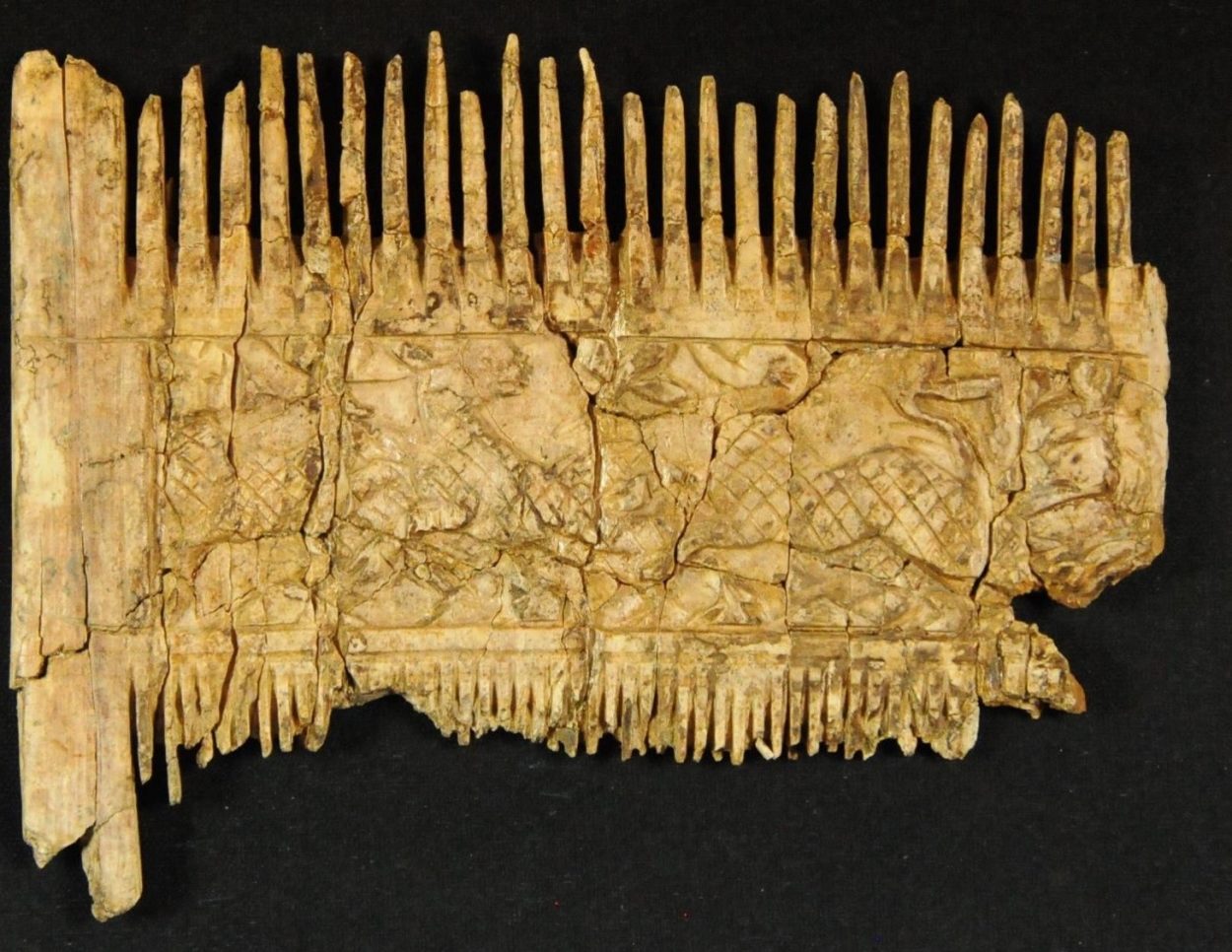Archaeologists excavating graves in the Nördlinger Ries region in western Bavaria, Germany, have recovered rare luxury grave goods from the early medieval period.
Excavations of two richly furnished graves dated from the 6th century AD, revealed numerous artefacts that includes an ivory comb depicting animal scenes, and an African bowl with enigmatic characters.
General Conservator Prof. Dipl.-Ing. Mathias Pfeil, head of the Bavarian State Office for Monument Preservation said: “The finds must have been extremely luxurious for the time. They show how far people’s contact reached, even after the dissolution of the Roman Empire.
How such exotic artefacts came to be within the Nördlinger Ries region is speculated, but it is suggested that they were originally tributes from when the area was under Franconian rule.
The comb was discovered within the grave of a 40-to-50-year-old man, who was buried alongside a long sword, a lance, a shield, and a battle axe. Combs as grave goods occur more frequently in the early Middle Ages, but are rarely made from ivory and lack the finesse and quality of the Nördlinger Ries discovery. Conversation of the comb shows that it depicts secular hunting scenes with gazelle-like creatures jumping away from predators not indigenous to Germany.

The bowl was found in a grave of a 30-40-year-old woman, along with jewellery, preserved eggs, and a weaving implement. A cross was stamped into the bowl’s base, and markings carved into the bowl’s rim that could be magical symbols or runes.
The bowl is made from African red slip that originates from Tunisia, which although widely traded in the Mediterranean, is the first example found in the region that suggests access to a wider trading network.
Header Image Credit : BLfD





